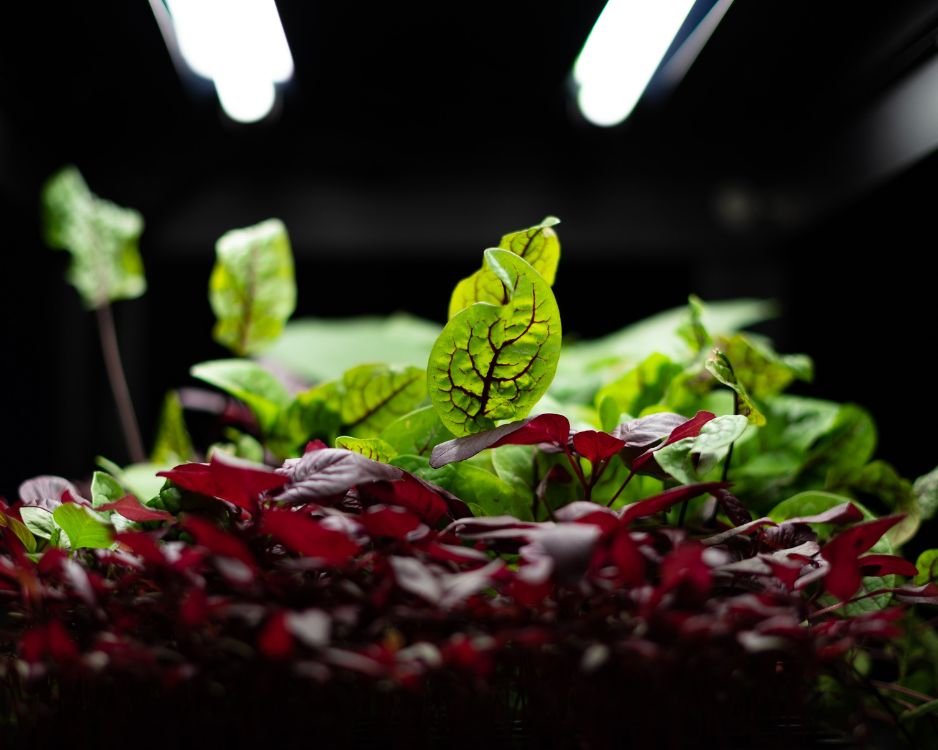
The Science of Light: How Spectral Composition Affects Plant Growth in Indoor Farms
The Science of Light: How Spectral Composition Affects Plant Growth in Indoor Farms
Light, the fundamental source of energy for plant life, plays a pivotal role in indoor farming. Understanding its intricate relationship with plant growth, particularly in the context of spectral composition, unveils the secrets behind optimising cultivation in controlled environments.
Plants, the master converters of light energy into chemical energy via photosynthesis, rely on a variety of light wavelengths for growth. Each light spectrum, from blue to red to far-red, plays a specific function in the growth cycle. Indoor farmers use this information to produce perfect growth conditions that replicate natural sunshine to improve plant health and productivity.
Impact of Different Spectrums on Plant Growth
- Blue Light: Known for its influence on plant morphology, blue light affects leaf thickness, stem length, and overall plant structure. It regulates chlorophyll production, essential for photosynthesis initiation.
- Red Light: Crucial for flowering and fruiting stages, red light triggers specific pigments responsible for these processes. It's a primary driver for plant growth and the production of biomass.
- Far-Red Light: Often used in combination with red light, far-red light regulates the plant's responses to light intensity and duration, impacting flowering time and photomorphogenesis (I.e, a development process in which the light determines the growth of the plant).
Understanding how different light spectra affect plant growth allows indoor farmers to fine-tune their lighting setups for optimal results.
- LED Grow Lights: These customizable light sources enable growers to manipulate spectral compositions. Tailoring light wavelengths to the specific needs of different plant species maximises growth potential.
- Light Intensity and Duration: Besides spectral composition, managing light intensity and duration is crucial. Adjusting these factors throughout the growth cycle mimics natural conditions, promoting healthy growth.
- Supplemental Lighting: Some plants benefit from supplemental lighting during specific growth stages. This practice ensures consistent, high-quality yields year-round.
Light not only fuels photosynthesis but also influences nutrient synthesis within plants.
- Carbohydrate Production: Adequate light ensures efficient carbohydrate synthesis, crucial for plant energy and growth.
- Vitamin and Phytochemical Content: Specific light spectrums influence the production of vitamins and phytochemicals, enhancing the nutritional value of plants.
While harnessing light for optimal plant growth is promising, challenges persist.
- Energy Consumption: Balancing energy efficiency with optimal light conditions remains a challenge in indoor farming.
- Spectral Precision: Fine-tuning light spectra for specific plant requirements requires continuous research and innovation.
Conclusion: Harnessing Light for Sustainable Indoor Farming
Understanding the intricacies of the light spectrum and their impact on plant growth is critical for successful indoor farming. Optimising light conditions in indoor farms becomes more feasible as technology progresses and our understanding of plant physiology deepens. Indoor farmers may grow healthy, high-quality crops on a sustainable basis by harnessing light science, leading to a more robust and efficient food production system.
Do you find the science of light in plant growth fascinating? Comment below with your views and experiences with light-based indoor gardening approaches!





Leave a comment